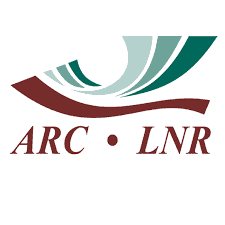On-Demand Transportation Professional

App-Based Transportation Career Opportunities
The rideshare driver career profession represents a modern evolution in personal transportation services, enabled by technology platforms that connect drivers using their own vehicles with passengers seeking on-demand rides. As independent contractors for companies like Uber and Lyft, these transportation providers combine driving skills with customer service to offer convenient, app-facilitated transportation in urban and suburban environments.
Rideshare driving jobs require a unique blend of navigation expertise, interpersonal abilities, and self-management to effectively serve passengers while optimizing earnings through strategic driving decisions.
The role encompasses more than just vehicle operation—including route selection, passenger interaction, vehicle maintenance, and business management as an independent contractor. As key participants in the growing gig economy, rideshare drivers find diverse opportunities across major metropolitan areas worldwide, with flexible work arrangements ranging from occasional part-time supplemental income to full-time professional driving careers. This role is part of our Transportation, Warehousing & Distribution Service Career series.
For those seeking adaptable employment with minimal entry barriers, the rideshare driver career path offers immediate income potential combined with schedule flexibility, providing opportunities to develop entrepreneurial skills while leveraging existing assets (vehicles) and driving abilities through technology platforms that handle marketing, payment processing, and customer acquisition on the driver’s behalf.
Gig Economy Transportation Overview
The global demand for rideshare drivers continues to expand as app-based transportation services gain mainstream acceptance across diverse markets. Job market conditions vary significantly by location, with particularly strong opportunities in densely populated urban centers, tourism-heavy destinations, and areas with limited public transportation alternatives. The emergence of this transportation model has created unprecedented flexibility for drivers to determine their own schedules, choosing to work during high-demand periods or maintaining consistent hours depending on their income goals and availability.
Current rideshare industry trends reflect significant transformations influencing driver experiences and earnings potential. Platform algorithms continually evolve, affecting driver matching, route assignments, and earnings calculations through dynamic pricing models that respond to real-time supply and demand conditions. Vehicle requirements are increasingly stringent in many markets, with age restrictions, inspection requirements, and in some regions, a gradual shift toward electric or hybrid vehicles to meet environmental standards. Regulatory frameworks continue to develop worldwide, with local governments establishing varying requirements for licensing, insurance, vehicle standards, and employment classification that directly impact driver operations and economics.
Competitive pressures between major platforms have driven frequent changes to incentive programs, bonus structures, and surge pricing models that significantly affect potential earnings. The integration of ridesharing with other services—including food delivery, package transportation, and grocery delivery—has expanded opportunities for drivers to diversify income streams through the same platforms. These industry developments have increased both opportunities and complexities for rideshare drivers, requiring adaptability to changing conditions while presenting multiple pathways to optimize earnings through strategic platform engagement.
3. On-Demand Transportation Job Availability & Global Earnings Comparison
📌 Rideshare Driver Job Availability Assessment
App-based transportation positions span diverse operational environments, with varying entry requirements and scheduling flexibility:
- Primary Employment Markets: Major metropolitan areas, suburban communities with limited public transit, airport corridors, tourist destinations, and entertainment districts
- High-Demand Opportunities: Rush hour commuter service, weekend nightlife transportation, airport transfers, event transportation (concerts/sports), and business district daytime service
- Leading Regions for Rideshare Jobs: Urban centers in the USA (particularly New York, Los Angeles, Chicago), London, Sydney, Toronto, Paris, Mexico City, and other global metropolitan hubs
- Qualification Requirements: Most platforms require clean driving records, vehicle inspections, background checks, and minimum driving experience (typically 1-3 years)
- Essential Documentation: Valid driver’s license, proof of insurance, vehicle registration, and completion of platform-specific application processes
📌 Rideshare Driver Average Pay Grade (Annual Income)
Earnings vary significantly based on location, hours worked, vehicle type, and strategic driving decisions:
- USA: $25,000 – $70,000+ (higher in major cities with significant full-time hours)
- UK: £20,000 – £55,000+ (London commands higher rates)
- Canada: CAD $30,000 – $65,000+ (varies by city and service level)
- Australia: AUD $35,000 – $75,000+ (stronger in Sydney and Melbourne)
- New Zealand: NZD $30,000 – $65,000+ (Auckland offers highest earning potential)
- Europe: €25,000 – €60,000 (varies by country, with higher earnings in Northern Europe)
- Asia & South America: $15,000 – $45,000 (significant regional variation)
Most rideshare drivers are paid through a combination of base fares, time and distance rates, surge pricing during high-demand periods, and incentive bonuses for completing target numbers of trips. As independent contractors, drivers must account for expenses including vehicle costs, fuel, maintenance, insurance, and self-employment taxes when calculating net earnings. Premium services like Uber Black or Lyft Lux offer higher fare rates but typically require higher-end vehicles and enhanced service standards.
📌 App-Based Driving Career Potential Grade
⭐⭐⭐ Moderate Career Growth with Opportunities in Professional Driving & Business Ownership
The rideshare industry offers several career development pathways:
- Service Tier Progression: Advancing from standard service (UberX/Lyft) to premium offerings (Uber Black/Lyft Lux)
- Operational Expansion: Moving from single-vehicle operation to managing multiple vehicles with hired drivers
- Service Diversification: Leveraging platform experience into specialized transportation niches
- Business Development: Transitioning from individual driver to transportation business ownership
- Platform Opportunities: Qualifying for specialized programs like Uber Comfort or preferred driver status
Career growth typically requires excellent customer ratings, vehicle investment, and increasingly, business management skills for those pursuing multi-vehicle operations or specialized services. The independent contractor model provides entrepreneurial opportunities but may limit traditional career advancement within corporate structures, making self-directed growth initiatives essential for long-term career development.
4. Essential Rideshare Platform Skills & Driver Application Requirements
Successful rideshare drivers combine professional driving capabilities with customer service skills and independent business management. Rideshare platforms consistently seek drivers with the following critical capabilities:
Defensive Driving & Road Safety Expertise
- Implementing proper urban driving techniques and passenger safety practices
- Navigating safely through congested city traffic and unfamiliar neighborhoods
- Adapting driving to various weather conditions and visibility challenges
- Maintaining appropriate following distances and anticipating traffic patterns
- Practicing passenger-focused smooth acceleration and braking
- Executing safe pickups and drop-offs in busy locations
- Minimizing distraction while managing app notifications during driving
Customer Service & Passenger Communication Skills
- Creating positive first impressions during pickup interactions
- Gauging passenger preferences for conversation or quiet rides
- Addressing special requests and accommodation needs professionally
- Managing passenger expectations regarding routes and arrival times
- Handling difficult interactions with tact and problem-solving focus
- Maintaining appropriate professional boundaries with passengers
- Developing approaches for consistent high ratings and tips
Navigation & Fare Optimization Strategies
- Utilizing app navigation while maintaining situational awareness
- Identifying efficient alternatives to app-suggested routes when appropriate
- Understanding airport procedures for passenger pickup and staging areas
- Planning strategic positioning for high-demand areas and surge pricing
- Minimizing deadhead miles between rides through positioning strategies
- Navigating effectively in high-rise districts and complex pickup points
- Applying local knowledge to enhance navigational efficiency
Vehicle Maintenance & Professional Presentation
- Establishing regular cleaning routines for interior and exterior
- Implementing preventative maintenance schedules for high-mileage driving
- Conducting pre-shift vehicle inspections for safety and appearance
- Managing vehicle supplies like chargers, water, and amenities
- Addressing minor mechanical issues promptly to avoid service interruptions
- Optimizing vehicle fuel efficiency and maintenance practices
- Ensuring appropriate temperature control and passenger comfort
Regulatory Compliance & Platform Policies
- Understanding local transportation regulations affecting rideshare operations
- Maintaining proper insurance coverage for commercial transportation activities
- Adhering to airport authority rules for rideshare operations
- Following platform-specific protocols for service delivery
- Tracking changes to terms of service and driver requirements
- Maintaining required documentation and inspection certifications
- Complying with local licensing requirements where applicable
Time Management & Earnings Optimization
- Identifying peak demand hours and locations in your service area
- Developing strategies for queue management at airports and event venues
- Planning efficient break schedules during shift work
- Balancing acceptance rates with profitable trip selection
- Leveraging bonuses and incentive programs effectively
- Managing personal time allocation for work-life balance
- Creating consistent scheduling patterns for income predictability
Financial Management & Business Operations
- Tracking mileage and expenses for tax purposes
- Implementing proper record-keeping for independent contractor status
- Analyzing earnings data to identify optimization opportunities
- Managing quarterly estimated tax payments appropriately
- Understanding vehicle depreciation and business expense deductions
- Evaluating platform promotions for actual earnings potential
- Developing multiple income streams across platforms when beneficial
Educational requirements are minimal compared to many professions, with emphasis placed on driving record, vehicle quality, and background checks rather than formal education. The combination of professional driving skills, customer-focused service, and independent business management creates the foundation for long-term success in this flexible transportation career.
5. Rideshare Platform Career Paths and Transportation Service Advancement Opportunities
The rideshare driving profession offers several distinct career progression routes, from casual part-time driving to full-time operation, specialized services, and transportation business ownership. Understanding these potential trajectories can help aspiring rideshare drivers strategically develop their approach for long-term career satisfaction and advancement.
Entry-Level On-Demand Transportation Positions
- Standard Rideshare Driver (UberX, Lyft Standard): Providing basic transportation services with an eligible vehicle
- Food Delivery Driver (Uber Eats, DoorDash): Delivering meals to expand income streams with lower vehicle requirements
- Car Rental Partner (Turo, Getaround): Generating income through peer-to-peer vehicle sharing when not driving
- Part-Time Evening/Weekend Driver: Working during high-demand periods while maintaining other employment
- Airport Transportation Specialist: Focusing on reliable airport pickup and drop-off services
These roles provide foundational experience in app-based transportation, navigation skills, and customer service, establishing practical knowledge necessary for advancement to more profitable driving strategies.
Mid-Level Rideshare Career Advancement
- Luxury Rideshare Driver (Uber Black, Lyft Lux): Operating premium vehicles for higher fares and clientele
- Airport & Corporate Transport Specialist: Focusing on business travelers and airport transportation
- Rideshare Team Leader: Mentoring new drivers while maintaining full-time driving schedule
- Multi-Platform Optimization Expert: Strategically using multiple services to maximize earnings
- High-Volume Full-Time Professional: Maximizing earnings through efficient full-time operations
Advancement to these positions usually requires 1-2 years of experience, excellent customer ratings, vehicle upgrades, and demonstrated proficiency in efficient service delivery.
Senior-Level Transportation Entrepreneurship Opportunities
- Fleet Owner & Operator: Managing multiple vehicles with hired drivers on rideshare platforms
- Private Chauffeur Service Provider: Developing regular clientele for scheduled premium transportation
- Transportation Business Owner: Establishing formal transportation company with branded service
- Specialized Transport Provider: Offering niche services like luxury group transportation
- Mixed-Service Transportation Provider: Combining rideshare with delivery and other transportation services
These positions typically require 2-3+ years of experience, business management capabilities, capital investment, and comprehensive understanding of local transportation markets.
Advanced Transportation Service Development Roles
- Transportation Service Franchise Owner: Operating multiple vehicles across various service categories
- Rideshare Policy Consultant: Advising on rideshare operations and regulatory compliance
- Government Transportation Advisor: Contributing expertise to transportation policy development
- Transportation Technology Consultant: Advising on app-based transportation implementation
- Regional Operations Specialist: Working with platforms on driver recruitment and operations
The most successful career transitions for rideshare drivers typically involve:
- Building exceptional customer service ratings and performance metrics
- Developing specialized knowledge of particular markets or service niches
- Acquiring business management skills and entrepreneurial capabilities
- Creating systems for operational efficiency and service consistency
- Adapting to changing platform requirements and market conditions
For international career advancement, understanding different urban transportation patterns, regulatory environments, and cultural expectations can significantly enhance professional opportunities in global transportation markets.
App-Based Employment
Creating an effective rideshare driver resume requires highlighting both your driving expertise and customer service abilities in a format that appeals to premium transportation services and potential business partners. Your application letter should emphasize your performance metrics and specific skills relevant to advanced transportation opportunities.
Effective On-Demand Driver Resume Structure
- Professional Summary: Begin with a concise overview highlighting your rideshare experience, customer rating average, and key strengths
- Performance Metrics Section: Showcase your star rating, trip completion rate, and any recognition from platforms
- Driving Experience: Detail your history with specific platforms, estimated trips completed, and service areas
- Vehicle Information: Include relevant details about your vehicle class and service capabilities
- Customer Service Highlights: Emphasize passenger feedback and service excellence examples
Best Resume Format for Rideshare Drivers
- Choose a clean, professional layout that emphasizes ratings and metrics
- Use a reverse-chronological format for transportation experience
- Limit your resume to two pages, focusing on relevant driving accomplishments
- Incorporate strategic section headers that include transportation terminology
- Use consistent formatting for platform experience, vehicle information, and service specializations
Key Elements to Highlight in Your Transportation Service CV
- Customer Ratings: Specify your average star rating and number of rated trips
- Platform Experience: Detail experience with various rideshare and delivery applications
- Service Area Knowledge: Note familiarity with particular cities, neighborhoods, or venues
- Performance Consistency: Emphasize completion rates and cancellation percentages
- Vehicle Qualifications: Highlight eligible service tiers for your vehicle (Standard, Comfort, XL)
Essential Rideshare Driver Skills for Resumes
✔ Navigation expertise in specific metropolitan areas ✔ Customer service and passenger communication ✔ Vehicle maintenance and professional presentation ✔ Efficient route selection and traffic management ✔ Surge pricing and peak demand optimization ✔ Safe driving record and accident prevention ✔ Multiple platform operation and strategic earnings management ✔ Special event and airport transportation experience
Sample Achievement Bullets for Transportation Service Resumes
Instead of listing general driving duties, focus on specific accomplishments:
- “Maintained 4.95-star average rating across 3,000+ completed rides while achieving 98% acceptance rate”
- “Consistently ranked in top 10% of drivers for passenger satisfaction in the Chicago market”
- “Developed efficient airport service strategy resulting in 30% higher hourly earnings than market average”
- “Successfully completed 500+ late-night rides with zero safety incidents and 4.9-star rating”
Remember to tailor your resume for each application, emphasizing experience relevant to the specific opportunity. For luxury services, highlight professional presentation and premium customer service; for fleet operations, stress reliability and consistent performance; for specialized transportation, emphasize relevant expertise and service capabilities.
A professional resume builder or cv maker can help structure your rideshare credentials effectively, ensuring your app-based driving experience is presented in an organized format that highlights your most valuable skills for potential advancement opportunities.
7. Rideshare Platform Interview Questions and Driver Application Guidance
Succeeding in rideshare driver interviews and application processes requires demonstrating both your driving professionalism and customer service orientation. Prepare for these common questions and scenarios to make a positive impression on potential platforms and premium transportation services.
Common Rideshare Driver Interview Questions
Customer Service and Passenger Experience
- “How do you handle difficult passengers?”
- “What strategies do you use to maintain a high rating?”
- “How do you create a positive experience for different types of riders?”
Earnings Optimization and Strategic Driving
- “What strategies do you use to maximize earnings during peak hours?”
- “How do you manage your time and schedule for optimal productivity?”
- “What approaches do you take to minimize downtime between rides?”
Safety and Professional Operation
- “How do you ensure passenger safety and comfort?”
- “What is your approach to driving safely in challenging conditions?”
- “How do you handle navigation challenges or traffic issues?”
Business Management and Independent Contracting
- “How do you manage the business aspects of being an independent contractor?”
- “What systems do you have for tracking expenses and managing taxes?”
- “How do you approach vehicle maintenance and long-term operational costs?”
App-Based Transportation Application Preparation Strategies
Before the Application/Interview:
- Research the specific platform’s service standards and driver requirements
- Prepare documentation including driver’s license, insurance, registration, and vehicle inspection
- Review your driving record and address any issues that might appear in background checks
- Understand the platform’s commission structure, incentive programs, and earnings model
During the Interview/Application Process:
- Present yourself professionally with appropriate attire and communication style
- Emphasize your knowledge of the local area and navigation capabilities
- Demonstrate awareness of key pickup locations like airports, hotels, and entertainment venues
- Highlight any relevant customer service experience from previous roles
Vehicle Presentation:
- Ensure your vehicle meets or exceeds platform requirements
- Present a clean, well-maintained vehicle for any in-person inspections
- Document any premium features that might qualify for higher service tiers
- Address any cosmetic issues that could impact passenger experience ratings
Documentation Organization:
- Have all required documents organized and easily accessible
- Prepare clear photos of required documentation for app-based submissions
- Keep digital copies of all platform agreements and communications
- Maintain organized records of vehicle maintenance and inspections
Remember that rideshare platforms value drivers who understand both safety requirements and customer service expectations. Showcase your ability to represent the brand positively while providing reliable, efficient service. The combination of professional driving capabilities, passenger-focused service, and business management awareness creates the strongest impression in rideshare applications and interviews.
8. App-Based Transportation Career Outlook and Rideshare Industry Next Steps
The rideshare driver profession continues to offer accessible opportunities within the evolving gig economy transportation sector. As urban mobility patterns change and technology platforms mature, the demand for app-based transportation services remains strong in metropolitan areas worldwide, creating ongoing opportunities for qualified drivers to generate income with flexible scheduling.
Future outlook for rideshare driving careers varies by location and engagement level. Urban centers typically offer the most consistent demand, particularly those with limited public transportation infrastructure or high tourism activity. Platform economics continue to evolve with changing commission structures, incentive programs, and service expansions into food delivery, package transportation, and other logistics services that can diversify revenue streams for drivers. Regulatory developments in many regions may impact classification status, benefits eligibility, and operational requirements, potentially transforming aspects of the independent contractor model currently predominant in the industry.
For those pursuing rideshare driving as a significant income source, strategic skill development is essential. Beyond basic navigation and driving abilities, focus on developing superior customer service skills, operational efficiency, and thorough knowledge of high-demand areas and times in your market. Understanding the business aspects of independent contracting—including tax management, expense tracking, and vehicle depreciation—can significantly impact net earnings. For those with entrepreneurial ambitions, learning fleet management skills creates a pathway toward transportation business development beyond single-vehicle operation.
Your professional development should include maintaining excellent passenger ratings, understanding platform algorithm changes, and building knowledge of your service area’s demand patterns. Consider using resources like CV4Students to create a professionally structured resume that effectively showcases your driving performance metrics and customer service excellence for premium transportation opportunities.
The rideshare driving profession offers the satisfaction of directly serving transportation needs with immediate income generation and flexible scheduling not available in many traditional employment arrangements. While subject to platform policy changes and varying demand patterns, it provides opportunities for both supplemental income and full-time professional driving careers with minimal entry barriers and the potential for entrepreneurial expansion through strategic business development.
Explore More in This Industry
Looking for other career options in this field?
👉 View more Transportation, Warehousing & Distribution Service Careers.
Resources & Organizations
These featured organizations play an active role in advancing pest management, scientific research, and agricultural development through education, policy, and innovation.

The African Association of Insect Scientists (AAIS) is a professional body committed to strengthening entomological science across Africa through research, education, and pest management innovation.
Visit Site →

The New Zealand Plant Protection Society promotes the science and practice of plant protection through conferences, publications, and collaboration with growers, researchers, and pest control professionals.
Visit Site →

The Agricultural Research Council of South Africa – Plant Protection leads national research efforts in crop protection, biosecurity, pest diagnostics, and integrated pest management (IPM) for sustainable agriculture.
Visit Site →
These organizations are featured for their outstanding contributions to pest management science, training, and global agricultural development.
This Rideshare Driver Career Guide provides general information about the profession globally. Specific requirements, compensation, and opportunities may vary by region, platform policies, and local regulations. Always research current conditions in your target market and on specific platforms when making career decisions.
